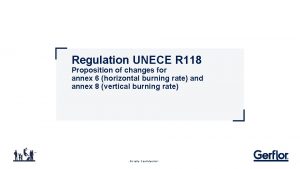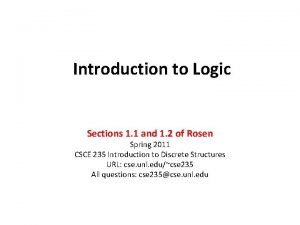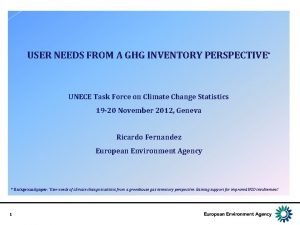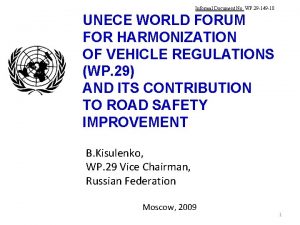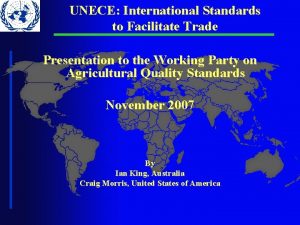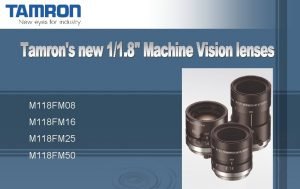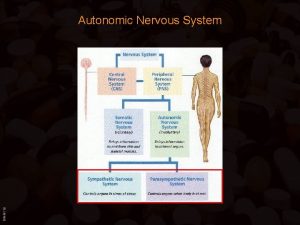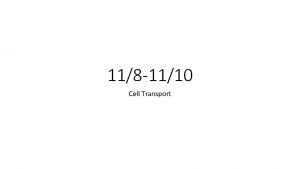Regulation UNECE R 118 Proposition of changes for






- Slides: 6

Regulation UNECE R 118 Proposition of changes for annex 6 (horizontal burning rate) and annex 8 (vertical burning rate) - Strictly Confidential -

Actual regulation UNECE R 118 : Tests methods Annex 6 (FMVSS 302, ISO 3795) Test to determine the horizontal burning rate of materials Products concerned : - materials and composite materials installed in a horizontal position in the interior compartment and, - insulation materials installed in a horizontal position in the engine compartment and any separate heating compartment. Test result OK if the horizontal burning rate is not more than 100 mm/minute or if the flame extinguishes before reaching the last measuring point. Annex 8 (ISO 6941) Test to determine the vertical burning rate of materials Products concerned : - materials and composite materials installed in a vertical position in the interior compartment, - insulation materials installed in a vertical position in the engine compartment and any separate heating compartment. Test result OK if the vertical burning rate is not more than 100 mm/minute or if the flame extinguishes before the destruction of one of the first marker threads occurred. Ignition source type lighter Application time of flame during 5 or 15 s Small dimensions of samples 2

Actual regulation UNECE R 118 : Analysis These methods are small-scale methods capable of evaluating only the flammability of materials and not the quantity of heat energy or the spread of fire. FMVSS 302 (1972) and ISO 3795 (1989) are very old test methods. ISO 6941 is a test method developed for the textiles products and not really adapted to the rigid products, especially plastics. These small ignition sources does not represent the reality of a large thermal attack (fire in the engine compartment or tires fire for example), only a small attack in a passenger compartment. No smoke density and toxicity evaluation. Quick and cheap tests, inte. 3

Proposition for Regulation UNECE R 118 For us it’s necessary to add a new test method with an ignition initiated by a large radiant heat exposure for all the products. In fact it’s already possible to use such a test method ISO 5658 -2 only for the products installed in a vertical position instead of ISO 6941. In the same approach, for the products installed in horizontal position we propose to use the standard EN ISO 9239 -1. These 2 test methods are proven and already used in other applications : Railway (products in a vertical position) and Maritime (all the products) for ISO 5658 -2 Railway (products in horizontal position) and Building (Floorcoverings) for EN ISO 9239 -1 Proposition of levels Actually in R 118, the materials (in vertical position) achieving an average CFE (critical heat flux at extinguishment) value greater or equal to 20 k. W/m², when tested according to ISO 5658 -2, are deemed to comply with the requirements. In Railway application according to EN ISO 9239 -1 for the conformity of Hazard Level 1 it’s necessary to have a CHF (critical heat flux at extinguishment) ≥ 4, 5 k. W/m². The simplest solution is probably to take back these already existing levels. 4

Proposition for Regulation UNECE R 118 For us if we add these new test methods it’s not necessary to add and additional measurements of smoke density and toxicity. Indeed the most important parameter is to control the spread of fire. For this we only need to know two important parameters: - Flammability of the different materials (cover by the actual test in R 118) - Fire spread potential of different materials (cover by our proposition) In addition as toxic effects (asphyxiant or irritant) of smoke, appear only when thermal effects have already compromised tenability, this problem must therefore be addressed by the smoke extraction and the evacuation systems of the passengers. 5

